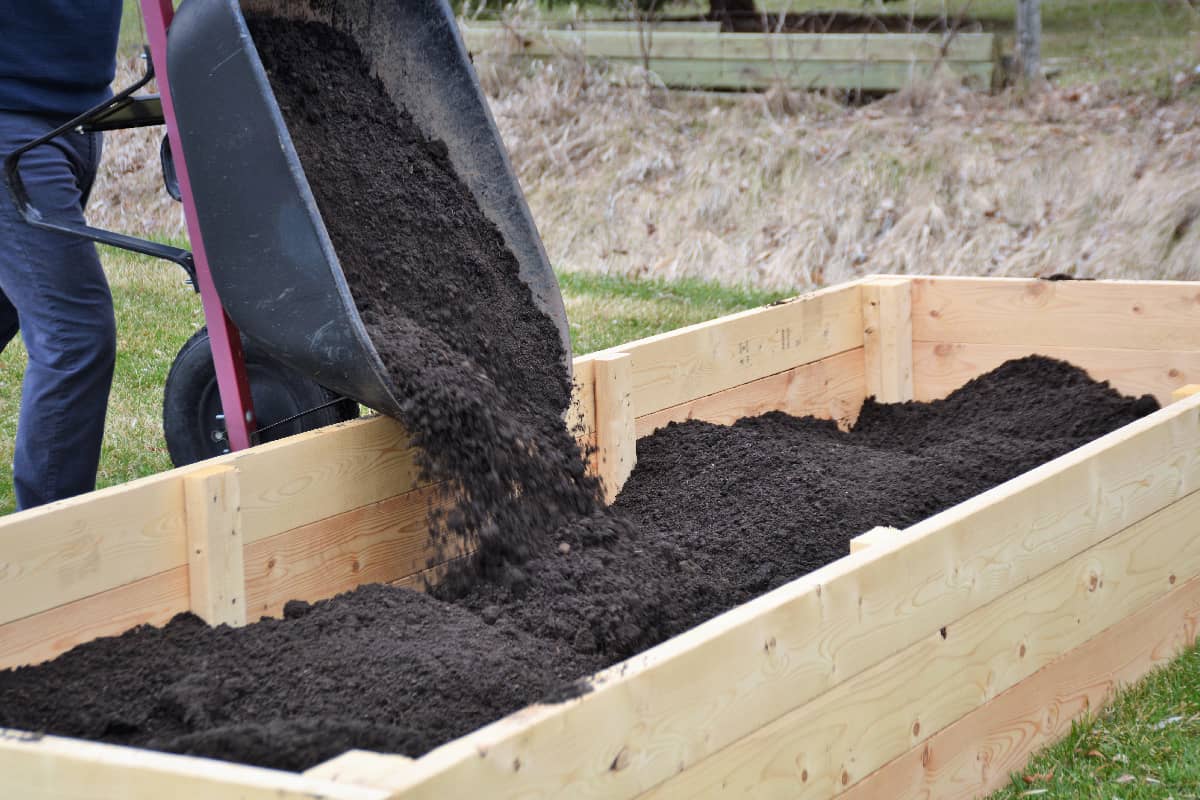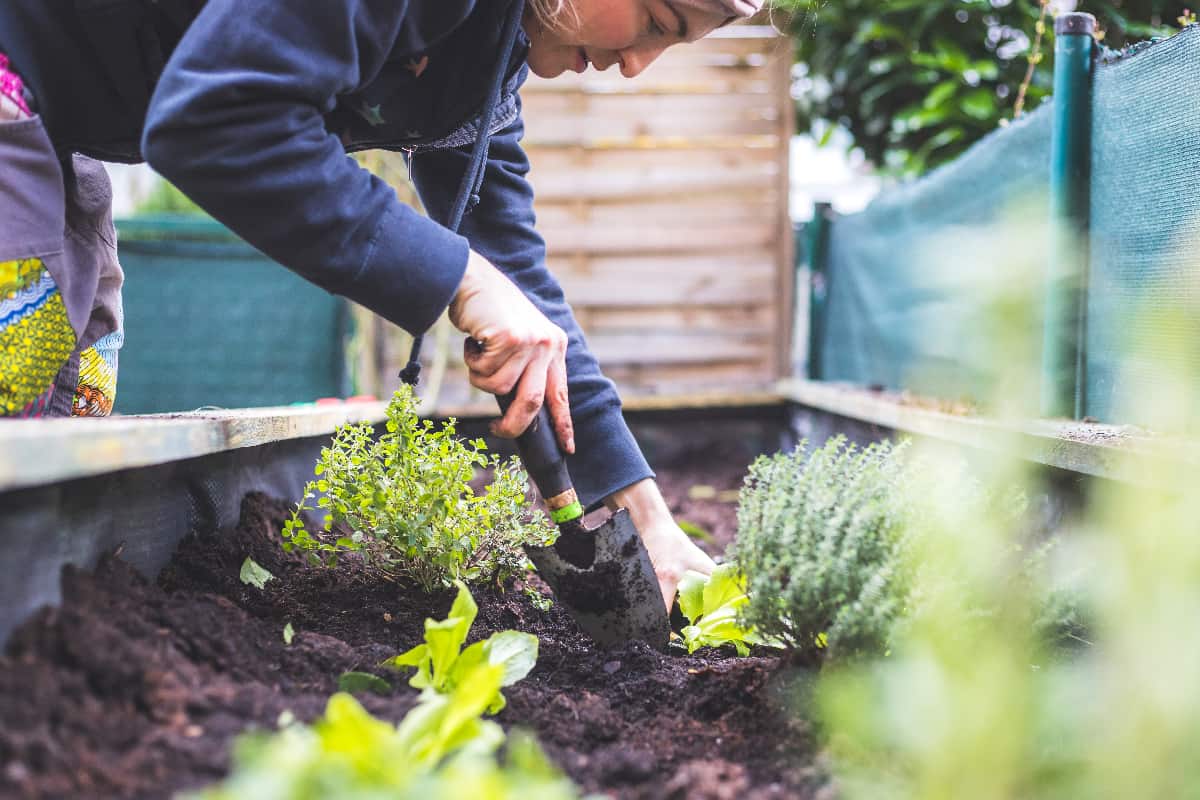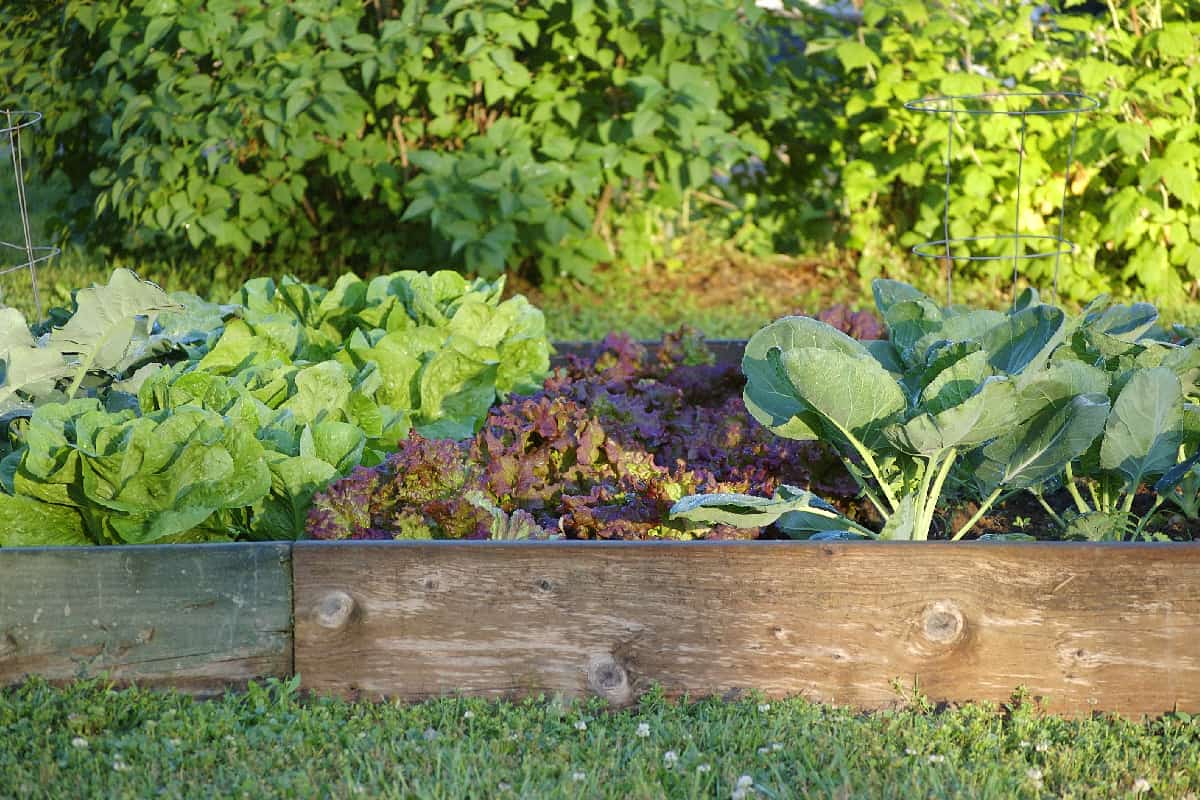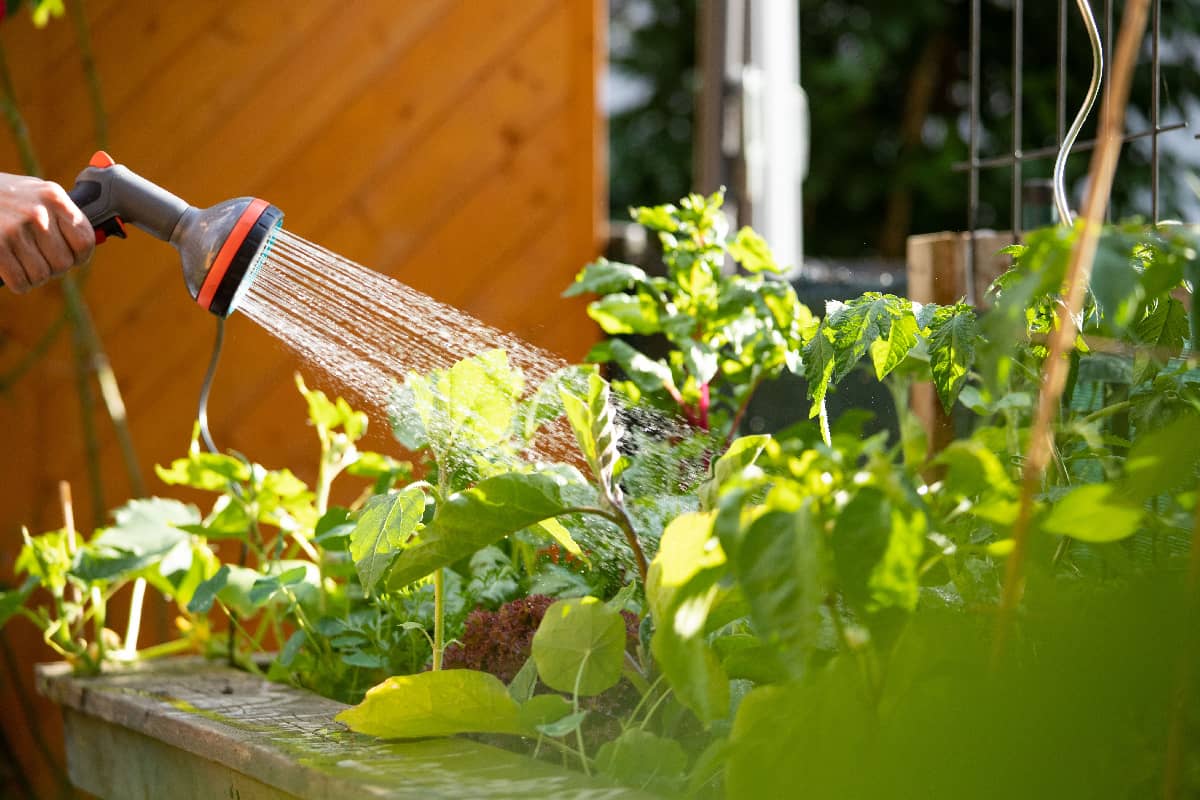If you want to start your own raised bed vegetable garden and feel intimidated, don't worry. We've researched the easiest and most convenient way to start this type of garden, and here is what we've learned.
To start a raised bed vegetable garden, you can follow these steps:
- Planning and labeling
- Find a location
- Prepare your raised bed
- Clear the area
- Use good soil
- Plant your bed
- Protect your garden
In this article, we will cover in detail how to grow vegetables effectively in a raised bed and share tips to ensure you're doing it the right way. Continue reading to learn more.
How to Start A Raised Bed Garden
![Backyard garden contains square raised planting beds for growing vegetables and herbs, How To Start Raised Bed Vegetable Gardening For Beginners [Step By Step Guide]](https://gardentabs.com/wp-content/uploads/2022/11/How-To-Start-Raised-Bed-Vegetable-Gardening-For-Beginners-Step-By-Step-Guide.jpg)
As a beginner, when it comes to gardening, you might make some mistakes, and you want to avoid that to save time and energy. Make sure to follow the guide below to raise a wonderful garden effectively.
1. Planning and labeling
When planting, it is essential to plan ahead. What size will your vegetables be, and how much space will they occupy? Will your plants overshadow your other crops?
These are things to consider, so it is essential to plan before planting to avoid making poor use of the space in your garden.
Not labeling or tracking what you put in your raised bed can lead to problems down the road. You might forget and confuse things, which could be a huge hassle. To avoid this, make sure to plan ahead and label your plants,
Click here to see these plant labels on Amazon.
Your plants could die if you ignore their growth and needs. Knowing the specific variety of vegetables you planted is important. Keeping track of what grows in your garden will help you understand how to care for your plants.
2. Find a location
Monitor your space. Did you choose a location that will get enough sunlight? Will trees block your garden?
One of the most important aspects of raising your garden is considering the location. It is essential to think about whether your plants will get direct sunlight for at least six to eight hours a day.
What direction your garden faces will affect the growth of your crops. The south receives the most sunlight throughout the day, which can benefit your plants.
3. Prepare your raised bed
When selecting materials for your raised bed, it is essential to ensure they are chemical-free. Choose untreated or natural wood. You can even use concrete or metal for added durability. These materials will not rot like wood.
Redwood and cedar are two of the best types of wood to consider when choosing a suitable material for your raised bed. Both are durable and long-lasting and do not rot quickly.
Click here to see this garden bed on Amazon.
You can also make your own garden bed if you prefer. Use wood planks that are at least an inch thick to ensure longevity. Drill on each end of the wood planks. Fasten the corners with brackets for a sturdy finish.
4. Clear the area
If your area has grass, you should dig it out to prepare the surface for the garden bed. Use a spirit level to ensure the bed is on the ground.
When installing your garden beds, it is essential to consider the space between each bed. They should have at least two feet of space between them, so you can create your garden without cramming in limited space.
After that, use the dug-out soil to tuck your raised garden beds firmly.
5. Use good soil

Good soil is essential to a successful garden. There are plenty of available options to choose from when filling your bed. You want to have a good mixture of topsoil, compost, and potting mix.
The best soil for growing vegetables contains a lot of compost and organic materials, including manure, dry leaves, chopped wood, and bark chips, which will add nutrients to your soil and benefit your plants.
You can first put down a layer of cardboard to act as a barrier that will suppress weeds. It is best to use recyclable cardboard.
When distributing the topsoil and compost, make sure that you do so evenly and apply firm pressure. You can top it with an all-purpose potting mix. The process is very easy, almost like child's play.
Click here to see this potting mix on Amazon.
6. Plant your bed

The most exciting part is planting. Directly plant seeds in your garden bed. You can germinate your vegetables in plug trays first and transport them later to your raised bed.
Click here to see this seedling tray on Amazon.
If you have difficulty germinating seeds, you can buy readily available plants sold in plug trays. Starting with a plant also shortens the time of harvest. You can find these in garden nurseries or garden centers.
As a beginner, you should plant vegetables you like to eat, and that grow in a short time. This will help you to stay encouraged when starting.
You can start with easy vegetables like radishes. Don't forget to give your garden bed a quick watering to put moisture into the soil.
7. Protect your garden

The final step is to protect and nurture your garden. Animals can cause havoc in your beds. Putting up safety nets will protect your plants.
Click here to see this mesh garden net on Amazon.
Consider mulching your garden bed. Mulch acts as a protective barrier for the soil, keeping it nice and moist. Mulch inhibits weed germination and growth. The mulch will eventually decompose and improve soil fertility.
To learn more, watch the video below.
Is a Raised Garden Bed Necessary?

A raised garden bed can be necessary if you have limited space and want to start a garden.
Because raised beds have less compacted soil and better drainage, plants can begin growing earlier in the spring as the soil warms up earlier in the season.
Gardening takes a lot of effort. Seeding, tending plants, weeding, watering, and harvesting are all time-consuming tasks.
A raised garden bed has the advantage of being built higher, making it more accessible, especially to people with back problems. A raised bed also takes up less space, has a better drainage system, and fits the garden setup.
Another advantage of gardening in raised beds is knowing exactly what goes into your food. You can personalize the beds by using a good soil mixture rather than just any old soil that might contain chemicals or weed sprouts.
How to Water Your Raised Beds?

There are several methods for watering your garden. Watering cans, garden hoses, drip lines, and sprinklers can all be used to water raised beds.
Manual watering is the simplest and least expensive way to water your crops in a raised bed. However, this method is time-consuming and requires effort.
You can use a hose to ensure a continuous water supply. Sprinklers are another option. Make sure to position your sprinklers correctly to evenly distribute water to your plants.
How Often Should You Water Raised Beds?
Your raised garden bed may dry out quickly during hot summer days. It is advised to water your plants at least once or twice each day. Early mornings and late evenings are the ideal times to water your plants.
In the cooler months of fall and early spring, you might only need to water every few days.
Wrapping Things Up
Gardening can be a lot of work, but eventually, it will pay off. We hope that this article has helped you and answered your questions regarding how to start a raised bed vegetable garden.
Want to read more? Check out these related posts below!
How To Remove Raised Beds From A Garden [Step-By-Step Guide]
Can You Use Old Turf To Fill A Raised Bed? Should You?
What Size Hardware Cloth Do I Need For A Raised Bed [& How To Attach It]?





